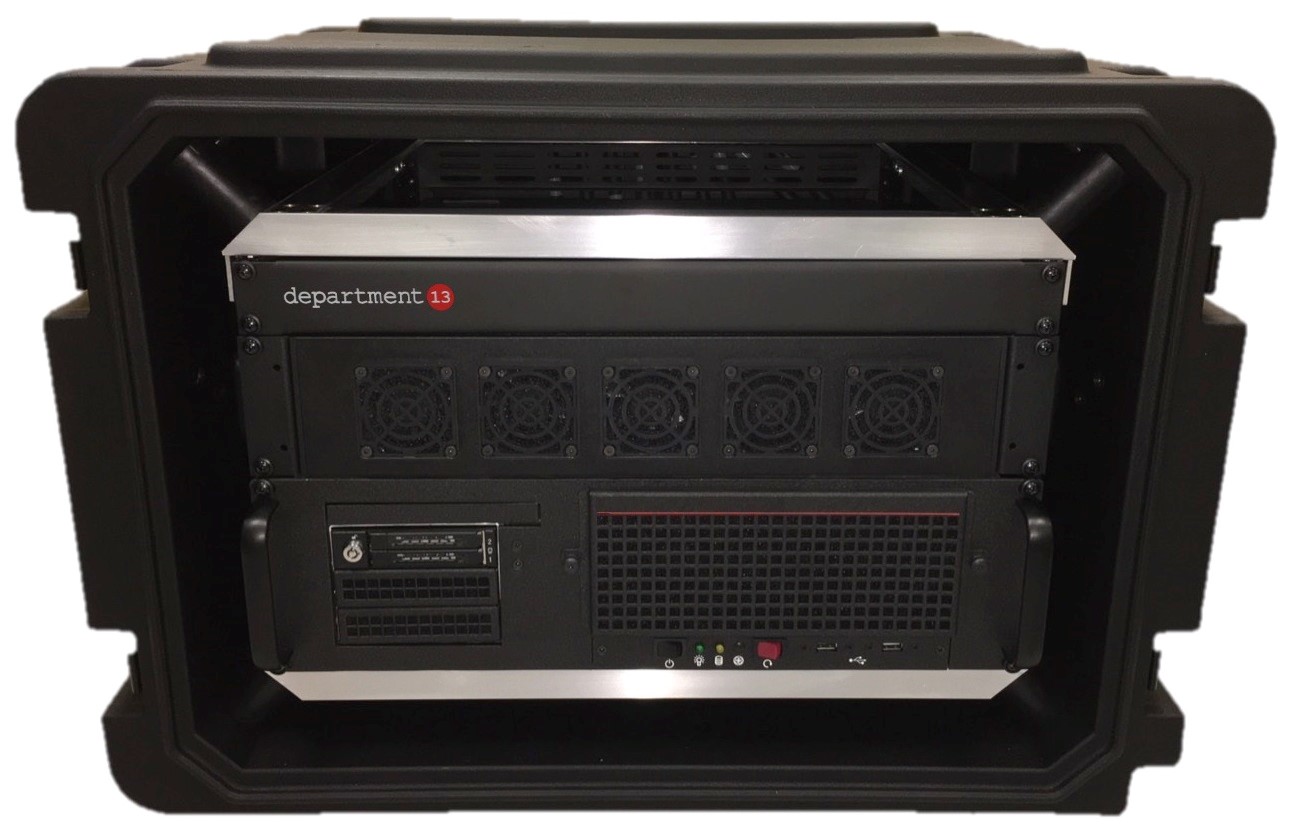
![]() SERIES FOCUS
SERIES FOCUS
SECURITY TECHNOLOGY & ROBOTICS – Singapore Conference 20-21 July 2017
Editor’s Interview with Department 13’s CEO Jonathan Hunter
Starting off in 2010 as a research company, Department 13 (D13) stuck true to the origin of its ‘Cold War’ name, designed to keep a secret US Government defence project hidden from the Soviets, and began looking at how radio protocols and digital radios could be manipulated and augmented from a passive sensor – both on the active and passive side. As CEO Jonathan Hunter pointed out, “we avoid terms like ‘hacking’, we prefer the term ‘spoofing’. Our solution offers a non-kinetic, non-jamming option which allows you to control your airspace.”

“Jonathan Hunter, Department 13’s CEO”
Jonathan is a former U.S. Army Explosive Ordnance Officer with multiple deployments to Afghanistan and Bosnia, spending 20 years in defence, federal law enforcement and commercial industry as a specialist in Counter Improvised Explosive Device Defeat (CIEDD). He is a Bronze Star Award recipient for actions in combat. This experience and expertise holds well when developing a counter-drone solution.
Department 13’s newly released ‘drone spoofing’ software, version 1 of ‘MESMER’, holds unique patents around their low power, non-jamming, non-line of sight, non-kinetic drone mitigation. Developed from research focusing on manipulating industrial, scientific and medical (ISM) radio band applications, D13 garnered the ability to take over a drone’s communication protocols. Naturally this approach gained early interest from the Department of Homeland Security and the Federal Bureau of Investigation.
The MESMER V1 uses a library based system targeting the commercial ISM bands, used by all commercial drones, achieving about 80 per cent of the available market, including DJI and Parrot drones. But Hunter remains confident, “essentially we are always increasing the capability and about to implement a new protocol to cover another five models of drones in the next 30 days – we are always growing and never shrinking. By May 2017, we will cover four ISM bands that drones fly on –2.4 GHz, 5.8 GHz, 433 MHz and 915 MHz spectrums.”
Despite being a software based solution, the system operates on its own hardware platform, but will also operate on other hardware platforms, including secure government systems. Hunter confirmed, “they were impressed when we took down a drone with a $35 Wi-Fi card. Our protocol manipulation is designed to counter the drone by taking over the drone’s communication and controls – we can then control its landing. This is unique.”
With this capability to control, the name ‘MESMER’ was inherently inspired by Franz Anton Mesmer, an 18th century German physician whose system of therapeutics, known as mesmerism, was the forerunner of the modern practice of hypnotism.
With the research completed in 2013, Department 13 selected a reverse listing onto the ASX and raised AU$12.5M to create Mesmer V1. Hunter explained the path to commercialisation, “we chose the ASX as it was an avenue towards capital and we were looking for greater flexibility – we have an extensive patent portfolio and this is at the heart of D13. We believe we’re a transformative company and we wanted more control. The ASX allowed us to do a reverse listing and essentially, we were up and running in about three and half months, which is fast for a research company moving to become an active, trading company. We’ve grown from 4 people to 26 people in 12 months.”
In June 2016, Department 13 was nominated as one of eight finalists, from a field of 42 applicants to the MITRE Corporation Countering Unauthorised Unmanned Aerial Systems (C-UAS). Then in September, D13 reached an international audience by taking part in the Department of Defence sponsored Black Dart event, held at the Eglin Air Force Base, Florida USA. The event hosted over 25 government entities, including for the first time, the Federal Aviation Administration and is designed to test and target over 20 different variants of UAS.
There are upwards of 70 countries with UAS programs, excluding the number of commercially available systems that anybody can get and the threat these systems pose is evolving in a significant way. The focus is generally on protecting civilian air traffic from drones, as close calls with airliners, medical rescue helicopters and firefighting planes are a growing hazard. But the military threat is growing even faster.
With commercially available drones, such as DJI drones, being deployed in war zones like Syria, Iraq, Afghanistan and on the African continent, there is a need to build fast capabilities which will provide a counter drone solution that doesn’t rely on a jamming approach. In Australia, D13’s channel partner is EPE, the largest provider of CIED technology and robotics into the Australian Defence Force and Police Bomb Response Units with more than 25 different systems in service. EPE is the largest provider of CIED to the Australian Defence Force (ADF) and also currently supplies and supports a significant fleet of Force Protection Electronic Counter Measures (FPECM) to the Australian and New Zealand governments. In November, 2016 a demonstration was held for the ADF and law enforcement communities, including the Commonwealth Games’ programme manager. The interest in counter drone technologies has a broad gambit, including for protecting amusement parks and yacht manufacturers. According to Markets and Markets Anti-Drone market report, with the vast range of applications, forecasts for the counter-drone market is to reach US$1.14 billion by 2022.
Department 13 is now awaiting its US Department of Commerce classification which should be delivered in weeks. Hunter said, “we are working with the Department of Commerce to ensure we can deliver our unique product worldwide. We manipulate the protocols of commercial radio systems, and we believe within weeks Department of Commerce will issue their final recommendation. If we receive a favourable final recommendation this will enable Department 13 to sell to a larger market without having to obtain a license for a certain category of countries, to include Australia. We’re now in a sell-cycle mode and have a lot of interest from customers around the world.”
Department 13 returns to Australia and New Zealand in February and March with active demonstrations over a six week schedule.
SERIES FOCUS
SECURITY TECHNOLOGY & ROBOTICS – Singapore Conference 20-21 July 2017 – CONFERENCE AGENDA






